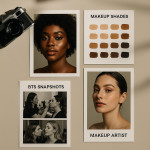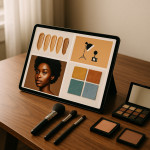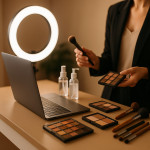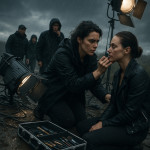Retouch expectations: aligning photographers and maquilleurs before the final shoot
A flawless image starts long before the first pixel is polished. When photographers and maquilleurs sync their retouch expectations early, they cut costs, shorten delivery times and elevate results. This guide shows you how to build that alignment step by step, from the first reference call to the hand-off of layered files.
Why “retouch expectations” decide the success of a campaign
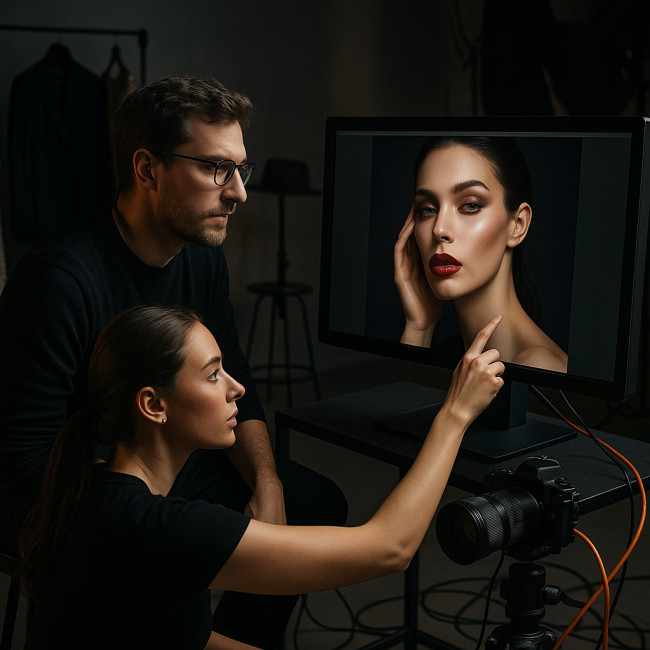
Retouching can make or break the visual impact—and the budget—of any beauty, fashion or commercial project. Misaligned assumptions often lead to wasted time, inflated invoices, and a creative crew that suddenly feels more like a crisis-management unit than an inspired atelier. When expectations remain vague, every pore becomes a battleground, colours ricochet between “too warm” and “too cool”, and hard-won launch calendars slide into the dreaded “TBD” column. Clear alignment turns that chaos into a streamlined workflow where each specialist focuses on their craft instead of firefighting unnecessary revisions.
- Unexpected overtime charges from the post-production house.
- Colour inconsistencies between makeup and final imagery.
- Delayed launches because fixes bounce back and forth.
Setting clear retouch expectations helps every stakeholder—creative director, brand, photographer and maquilleur—play to their strengths without wasting energy.
Pre-production: build a shared visual language
1. Host a reference meeting—screenshare style
Gather key players on a 30-minute call. Share a live board of approved references: lighting mood, skin texture goals, hair fly-away tolerance and colour palettes. Including the maquilleur at this stage prevents later surprises, such as being asked to “erase shimmer” that the client loved in person.
Need a friction-free way to do this? Read how joint moodboards smooth photo-crew workflow before you schedule the call.
2. Translate adjectives into measurable targets
Saying “natural glow” means different things to different eyes. Convert words into numbers:
| Descriptor | Makeup Action | Retouch Action |
|---|---|---|
| “Porcelain skin” | Low-coverage foundation, neutral tones | Maximum of 10% texture clean-up, no colour shifts |
| “Editorial shine” | High-gloss highlights on cheekbones | Preserve specular highlights, dodge & burn only |
| “Matte commercial” | Oil-control primer, powder finish | Reduce hotspots below 5% tolerance |
3. Lock retouch rounds in the contract
Agree on the number of revision rounds and who approves each one. A common structure is:
- Colour proof round (photographer + maquilleur input).
- Client feedback round.
- Final polish round (retoucher only).
Spell this out in writing. If you need template language, freelance photo contract clauses cover the must-have paragraphs.
Shoot day: empower the maquilleur to “retouch on set”
1. Create a live feedback loop
Tether the camera feed to a calibrated monitor visible to both photographer and maquilleur. The makeup artist can spot creasing concealer or shifting lip lines before they snowball into hours of cloning in post.
2. Sync lighting and makeup choices
A warm key light will amplify red undertones; a cool fill might flatten a bronze contour. Schedule a 10-minute lighting test with the maquilleur present so adjustments happen before the first hero frame. For deeper guidance, see how lighting syncs with maquilleur workflow.
3. Capture texture plates
Ask the maquilleur to create a perfect patch of skin, hair or fabric and photograph it separately. Retouchers can sample from this plate to repair micro-flaws without inventing texture.
File hand-off: metadata that saves late-night emails
1. Layer naming conventions
Agree on a simple system—BG_clean, Skin_DB, Color_LUT—so any stakeholder can open the file months later and understand the stack.
2. Embed colour profiles
Fighting over “Why is the lipstick orange?” after exporting CMYK proofs drains morale. Embed sRGB or Adobe RGB at capture and keep the profile visible through every retouch version.
3. Attach a quick-reference PDF
Include before/after thumbnails, layer glossary and approval timestamps. This one-pager prevents confusion if files change hands or agencies merge teams mid-campaign.
Post-production: collaborative review rituals
1. 24-hour cooling rule
Everyone's eyes get tired. Build in one sleeping cycle before final approval. Minor artefacts reveal themselves after you stare at something other than a backlit screen.
2. Three-screen test
Approve on a calibrated monitor, a standard laptop and a smartphone. The maquilleur can check that blush gradients hold up on mobile commerce sites where most customers will view the imagery.
3. Final polish sign-off
The maquilleur should get a last glance to ensure branding elements and skin details remain truthful. Doing so tightens trust and keeps future collaborations smooth.
Common pitfalls and how to avoid them
- Over-softened skin: Anchor texture by referencing original RAW files.
- Colour-shifted makeup: Use brand-approved LUTs and confirm under multiple light temperatures.
- Missed fly-aways: Ask the maquilleur to pack a precision trimmer for on-set fixes; saves cloning later.
Workflow timeline: from brief to publish
- Brief & reference call (Day –10).
- Contract signature & retouch round agreement (Day –8).
- Lighting + makeup test (Day –1).
- Shoot day with live patch checks (Day 0).
- Colour proof round (Day +2).
- Client revisions (Day +4).
- Final polish & delivery (Day +6).
Mini-quiz: are your retouch expectations crystal clear?
FAQ
- Who owns the final retouched files?
- Unless otherwise stated, the commissioning client owns usage rights, but photographers often retain copyright. Make this explicit in the contract.
- Should the maquilleur charge extra for on-set “retouch rescue” duties?
- Yes. Include a day rate that covers proactive fixes and last-minute look changes.
- How do we decide between frequency separation and dodge & burn?
- Choose based on texture goals: frequency separation for commercial quick fixes, dodge & burn for high-end editorial skin.
- Can we skip RAW delivery if the photographer nails exposure?
- No. Providing RAW files gives retouchers maximum latitude and protects against unexpected client requests.
- Where can I find vetted professionals for future collaborations?
- Browse dedicated talent pages such as collaboration-ready makeup artists on Artfolio to filter by specialty, location and availability.
Take-away checklist
- Book a shared reference call and document measurable skin goals.
- Define retouch rounds, approvers and deadlines in writing.
- Include the maquilleur in lighting tests to avoid colour surprises.
- Hand off layered files with clear naming and embedded colour profiles.
- Run a three-screen test before client delivery.
Ready to lock flawless results?
Aligning retouch expectations is simpler than you think—if you start early. Kick-off your next brief armed with the steps above and watch revisions vanish. When you need deeper production synergy, our guide on onboarding new assistants will help you scale smoothly.
Need a partner for your upcoming shoot? Reach out today and let's transform concepts into scroll-stopping visuals—without post-production headaches.
